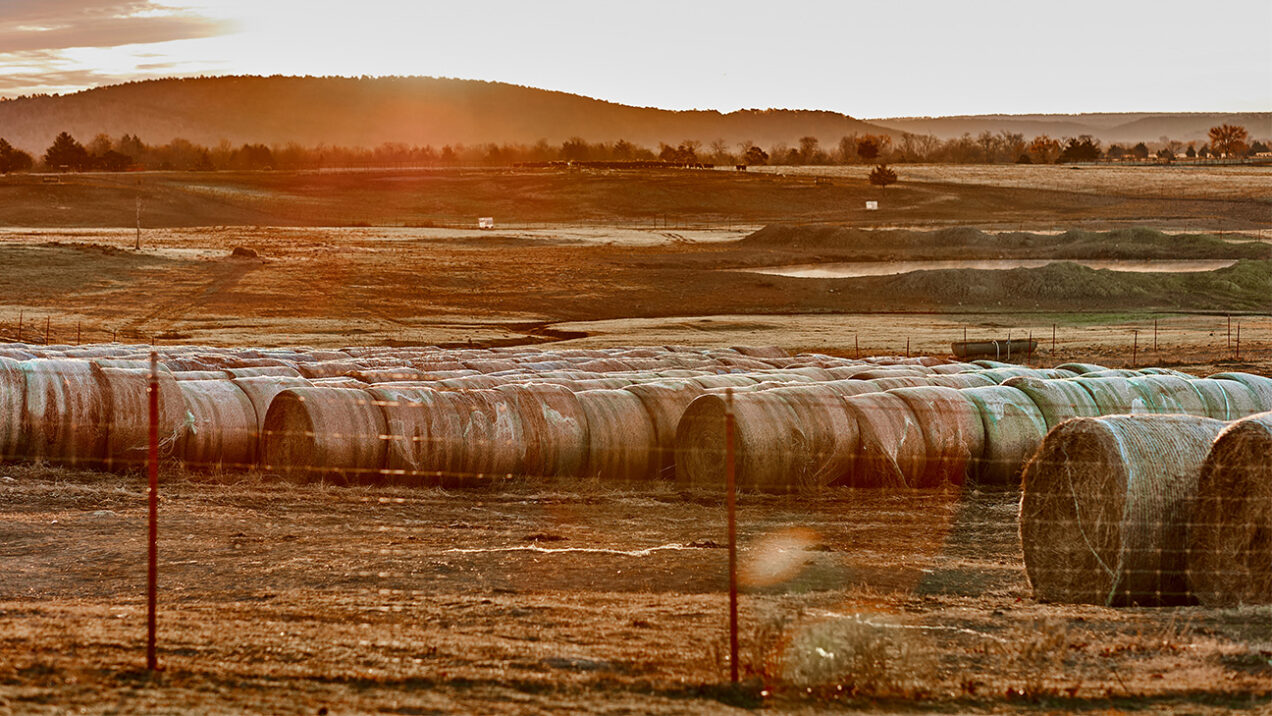Speaking of hay production, now is the time to be thinking about your upcoming fall and winter needs. I’m beginning to hear more forecasts leaning toward a drier Oklahoma summer – yes, again – which could limit chances of second and third cuttings.
Over the last few years, many producers have had to considerably downsize their cow herds — which should, in turn, reduce hay needs. Furthermore (weather-wise at least), we got through this last winter-feeding season pretty well, so you may have more carryover hay than expected. I realize most of you are sick of seeing that haystack, but if you haven’t already done so, it might be worth one more look and count what’s left to ensure you’re properly prepared for the fall.
The most important factors affecting the nutritive value of hay are:
- moisture content at baling,
- length and conditions of storage,
- maturity at cutting, and
- forage species present.
Moisture content at baling and storage characteristics contribute considerably to the nutritive value of the hay and are oftentimes at the control of the operator.
Excessive moisture content (> 22%) at baling is frequently only an issue when it results in significant hay spoilage or a barn fire. However, baling wet hay results in a significant reduction in nutritive value as well as losses in dry-matter production, which prove to be detrimental when feeding. A natural event commonly referred to as “heating” occurs whenever growing forages are cut and continue to give off heat due to respiration. This heat is of little consequence except to provide proper growing conditions for bacteria and will subside as the moisture content of the forage drops during the curing process. However, if hay is baled too wet, microbe populations flourish and exacerbate the heating process, resulting in hay that is lower in nutritive value and dry-matter availability — and in extreme cases, significant losses due to barn and/or hay fires.
Moisture levels for safe storage vary with size and density of the bale and type of hay. To minimize leaf shattering, molding and heating, hay in small square bales should be baled between 15 and 22% moisture. Larger bales tend to retain their core moisture, thus internal heat is retained longer and therefore should not be baled at moisture levels in excess of 18%. If baling hay with more than 22% moisture is necessary, do not stack for at least 30 days and consider this fact when feeding.
Large bales stored outside will suffer variable losses. These losses depend heavily on hay moisture at baling, extent of precipitation exposure, characteristics of soil drainage in the bale storage location, the amount of space between the bales and the type of hay. Store properly baled hay in a well-drained area, a minimum of three feet between bale rows, away from trees or shade and in the same direction as prevailing winds (north and south).
I have often heard hay feeding referred to as a “necessary evil.” I actually do agree with most of the sentiment behind this statement. Hay is costly. Beyond that, it is time-consuming, hard on equipment, inefficient and many other challenges I could list here. As such, through proper stocking rates and grazing management practices, we should all strive to limit it as much as possible.
However, in many instances – especially during pre-conditioning and backgrounding activities – it is, in fact, “necessary” and will need to be matched with animal nutrient demands. These demands will be influenced by stage of lactation, mature weight, frame size, breed and weather conditions. Furthermore, you must ask yourself, “how is the existing forage base (quality and quantity) going to contribute to the feeding program? Will it augment supplemental hay — or not contribute at all, and therefore require substitution?”
This information will yield insight into the quality and quantity of hay necessary to be most efficient through the feeding period. Utilize the information discussed above to your benefit. A good rule of thumb to consider as well is: for every month you feed a mature, non-lactating, cow (1,200 lbs.), you need one 1,000 lb. bale of hay. Thus, if you plan on carrying 50 cows through next winter, assuming a three-month feeding period, the baseline amount of hay you’ll need is 150 bales.
